Radio waves, the unsung heroes of the electromagnetic spectrum, serve as the cornerstone of amateur radio, enabling enthusiasts to experiment, communicate, and explore a world invisible to the naked eye. These waves, oscillating electric and magnetic fields that travel through space at the speed of light, embody the confluence of physics, engineering, and art that defines amateur radio. Understanding radio waves is not merely an academic exercise; it’s a gateway to mastering the airwaves, designing effective antennas, and optimizing communication strategies.
This article embarks on a journey to unravel the complexities of radio waves, aiming to shed light on their fundamental nature and properties. Our objective is clear: to transform abstract concepts into tangible knowledge, equipping beginners and seasoned amateurs alike with the insights needed to navigate the electromagnetic spectrum with confidence and curiosity.
- What are Radio Waves?
- Defining Electromagnetic Waves
- Position in the Electromagnetic Spectrum
- Generation of Radio Waves
- Properties of Radio Waves
- Wavelength and Frequency
- Amplitude
- Polarization
- Phase
- How Radio Waves Propagate
- Line of Sight Propagation
- Ground Wave Propagation
- Skywave Propagation
- Space Wave Propagation
- Radio Wave Interaction with the Environment
- Reflection
- Diffraction
- Absorption
- Practical Application in Amateur Radio
- Antenna Design and Placement
- Choosing the Right Frequency Band
- Propagation Prediction Tools
- Conclusion
- Further Links
What are Radio Waves?
At their core, radio waves are a form of electromagnetic radiation, akin to light, X-rays, and gamma rays, but distinguished by their longer wavelengths and lower frequencies. This categorization places them on the electromagnetic spectrum, a continuum that represents the full range of electromagnetic radiation based on frequency and wavelength. Radio waves specifically occupy the spectrum from about 3 kHz to 300 GHz, a range that, despite being at the lower frequency end of the spectrum, encompasses a vast array of applications, from the mundane to the cutting edge of scientific research.
Defining Electromagnetic Waves
To delve deeper, electromagnetic waves, including radio waves, are solutions to Maxwell’s equations, which describe how electric and magnetic fields propagate through space and time. These waves are transverse, meaning the oscillations of the electric and magnetic fields are perpendicular to the direction of wave propagation. The beauty of electromagnetic waves lies in their self-sustaining nature: a changing electric field generates a changing magnetic field, and vice versa, allowing these waves to travel through the vacuum of space without the need for a medium.
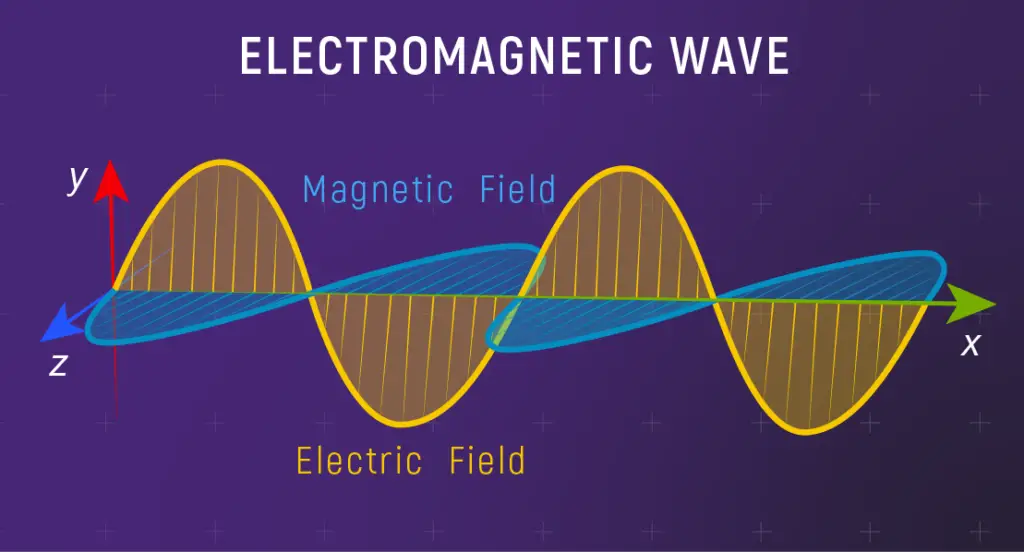
Position in the Electromagnetic Spectrum
Radio waves find their place at the lower end of the electromagnetic spectrum, characterized by their longer wavelengths (ranging from a few millimeters to hundreds of meters) and lower frequencies. This position on the spectrum dictates not only the techniques used for their generation and reception but also their interaction with the environment, which in turn influences their applications in communication, broadcasting, and radar.
The spectrum itself is divided into various bands, each with its unique properties and uses. For amateur radio operators, specific bands like HF (high frequency), VHF (very high frequency), and UHF (ultra high frequency) are of particular interest, as they offer different propagation characteristics, such as ground wave, skywave, and line-of-sight propagation, respectively. These bands enable communication over varying distances, from local to global, depending on atmospheric conditions and the time of day.

Generation of Radio Waves
The generation of radio waves is a marvel of electromagnetic induction. At its simplest, when an alternating current flows through a conductor, it creates an oscillating magnetic field around the conductor. According to Faraday’s law of electromagnetic induction, this changing magnetic field induces a changing electric field, and together, these oscillating fields propagate away from the antenna as an electromagnetic wave – in this case, a radio wave.
The frequency of the radio wave is directly tied to the frequency of the alternating current. Thus, by controlling the current’s frequency, we can generate radio waves of a specific frequency. This principle is the cornerstone of radio transmission, allowing operators to select frequencies that match the desired propagation characteristics and regulatory requirements.
Antennas, the starting point for these waves, are designed to match the wavelength of the radio waves they intend to transmit or receive, optimizing the efficiency of radiation or reception. The intricate dance between electric and magnetic fields in antennas underscores the deep connection between physics and engineering in amateur radio, where understanding the nature of radio waves is essential for mastering the art of communication across the airwaves.
Properties of Radio Waves
To fully grasp the essence and utility of radio waves in amateur radio, it’s imperative to delve into their defining properties: wavelength, frequency, amplitude, polarization, and phase. Each property plays a crucial role in how radio waves propagate, interact with the environment, and ultimately determine the quality and feasibility of radio communication.
Wavelength and Frequency
At the heart of understanding radio waves lies the relationship between their wavelength () and frequency (
). This relationship is succinctly captured by the equation
, where
is the speed of light in a vacuum, approximately
meters per second. Frequency, measured in Hertz (Hz), denotes the number of wave cycles that pass a given point per second, while wavelength, measured in meters, is the distance between identical points (such as peaks) in consecutive cycles of a wave.
The inverse relationship between frequency and wavelength means that as the frequency of a radio wave increases, its wavelength decreases, and vice versa. This principle is foundational in amateur radio, influencing everything from antenna design to the selection of frequencies for specific types of communication. High-frequency waves, with shorter wavelengths, are typically used for long-distance communication, leveraging their ability to reflect off the ionosphere, while lower frequencies, with their longer wavelengths, are favored for local communications and are less susceptible to atmospheric absorption.

Amplitude
Amplitude refers to the maximum extent of a wave’s oscillation from its equilibrium position, essentially describing the height of the wave. In the context of radio waves, amplitude is indicative of the wave’s strength or intensity. The greater the amplitude, the more powerful the wave, which translates to a stronger, and potentially clearer, signal at the receiver’s end. In amplitude modulation (AM) radio broadcasting, variations in the amplitude of the carrier wave encode the audio information, highlighting the direct impact of amplitude on communication.
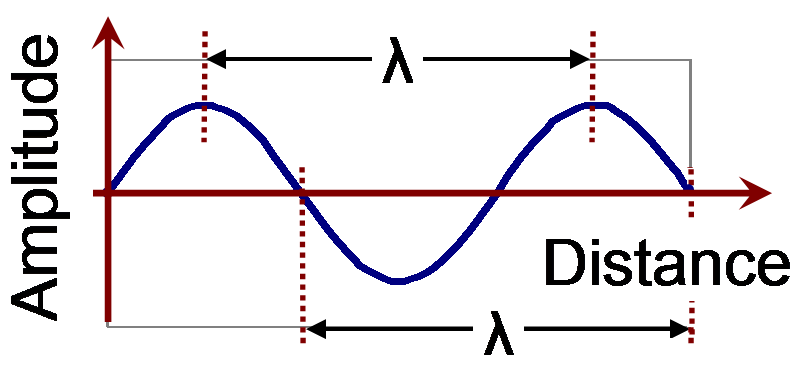
Polarization
Polarization describes the orientation of a radio wave’s electric field vector as it propagates through space. The two primary types of polarization relevant to amateur radio are horizontal and vertical polarization, determined by the orientation of the antenna emitting the radio waves. Horizontal polarization means the electric field oscillates parallel to the Earth’s surface, while vertical polarization sees the electric field oscillating perpendicular to the Earth. The choice of polarization affects the propagation characteristics of the wave and can influence the design of both transmitting and receiving antennas to ensure they are aligned for optimal signal reception.
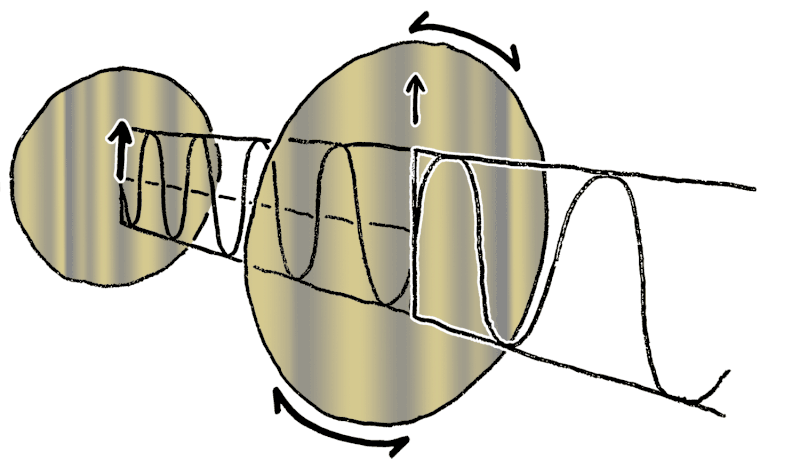
Phase
Phase in radio waves pertains to the position of a point within the wave cycle at a given instant, often measured in degrees or radians. When discussing multiple waves, the term “phase” can refer to the relative timing between their cycles. Phase is crucial in both analog and digital communications; in digital communications, for example, phase shift keying (PSK) is a modulation technique where the phase of a carrier wave is varied to represent digital data. The ability to manipulate and detect changes in the phase of radio waves enables more efficient use of the spectrum and higher data rates, underscoring the importance of phase in contemporary communication systems.

Understanding these properties is not just academic; it’s a practical necessity for the amateur radio operator. Mastery over these concepts allows for the sophisticated use of radio technology, from designing antennas that effectively capture and transmit radio waves, to choosing the right frequency and modulation scheme for a given communication need.
How Radio Waves Propagate
Understanding how radio waves propagate is crucial for amateur radio operators to effectively send and receive signals. Radio wave propagation can be complex, influenced by various factors including the frequency of the wave, the physical environment, and atmospheric conditions. Let’s delve into the primary modes of radio wave propagation and their implications for amateur radio communications.
Line of Sight Propagation
Line of Sight (LoS) propagation is the most straightforward mode, where radio waves travel directly from the transmitter to the receiver without obstruction. LoS is predominant at Very High Frequencies (VHF, 30 to 300 MHz) and Ultra High Frequencies (UHF, 300 MHz to 3 GHz), where waves behave similarly to light, not bending around the Earth or penetrating solid objects well. However, LoS propagation is limited by the curvature of the Earth, geographical obstacles, and the height of the transmitting and receiving antennas. Enhancing LoS propagation involves strategic placement of antennas at higher elevations or utilizing repeater stations to extend the range of communication.

Ground Wave Propagation
Ground wave propagation allows radio waves, particularly those at lower frequencies, to travel along the Earth’s surface. This mode is influenced by the conductivity of the ground; waves can travel farther over sea water than over dry land or mountains. Ground waves comprise two components: the surface wave that attenuates as it follows the Earth’s curvature, and the direct wave that travels straight from the transmitter to the receiver. Ground wave propagation is essential for medium wave (MW) broadcasting and for lower frequency amateur radio bands, providing reliable communication over distances up to several hundred kilometers without requiring line of sight.
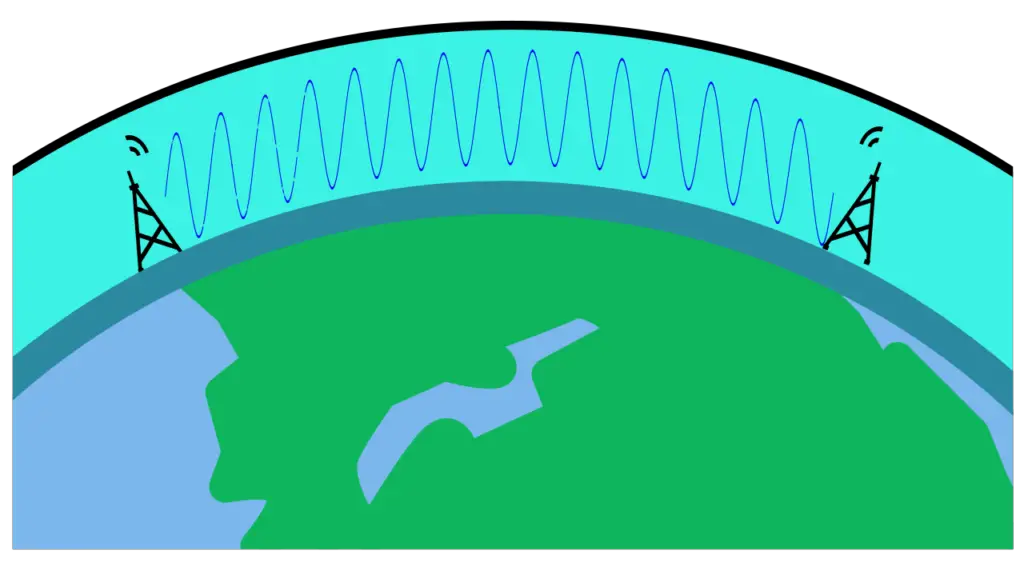
Skywave Propagation
Skywave propagation, or ionospheric propagation, is a phenomenon where radio waves directed towards the sky are reflected or refracted back to Earth by the ionosphere, an ionized layer of the atmosphere located approximately 60 to 600 kilometers above the Earth. This mode of propagation enables long-distance communication over thousands of kilometers, well beyond the horizon. The ionosphere’s ability to reflect radio waves back to Earth varies with the time of day, season, solar cycle, and frequency of the waves. Amateur radio operators leverage skywave propagation, especially in the High Frequency (HF, 3 to 30 MHz) bands, to establish international contacts and explore distant cultures and geographies.

Space Wave Propagation
Space wave propagation encompasses two mechanisms: direct waves that travel in a straight line, similar to LoS but over shorter distances and higher frequencies, and waves that are slightly refracted or bent by the troposphere, the lowest layer of the Earth’s atmosphere. Space wave propagation is significant for VHF and UHF communications, supporting services like FM radio, television broadcasting, and line-of-sight amateur radio communications. While space waves can surmount minor geographical obstacles due to tropospheric bending, their reach is generally limited to the radio horizon, which extends slightly beyond the visual horizon due to atmospheric refraction.
Radio Wave Interaction with the Environment
Radio waves, in their journey from transmitter to receiver, engage in a complex dance with the environment, influenced by various phenomena such as reflection, refraction, diffraction, and absorption. These interactions not only challenge our understanding but also shape the efficacy of radio communications.
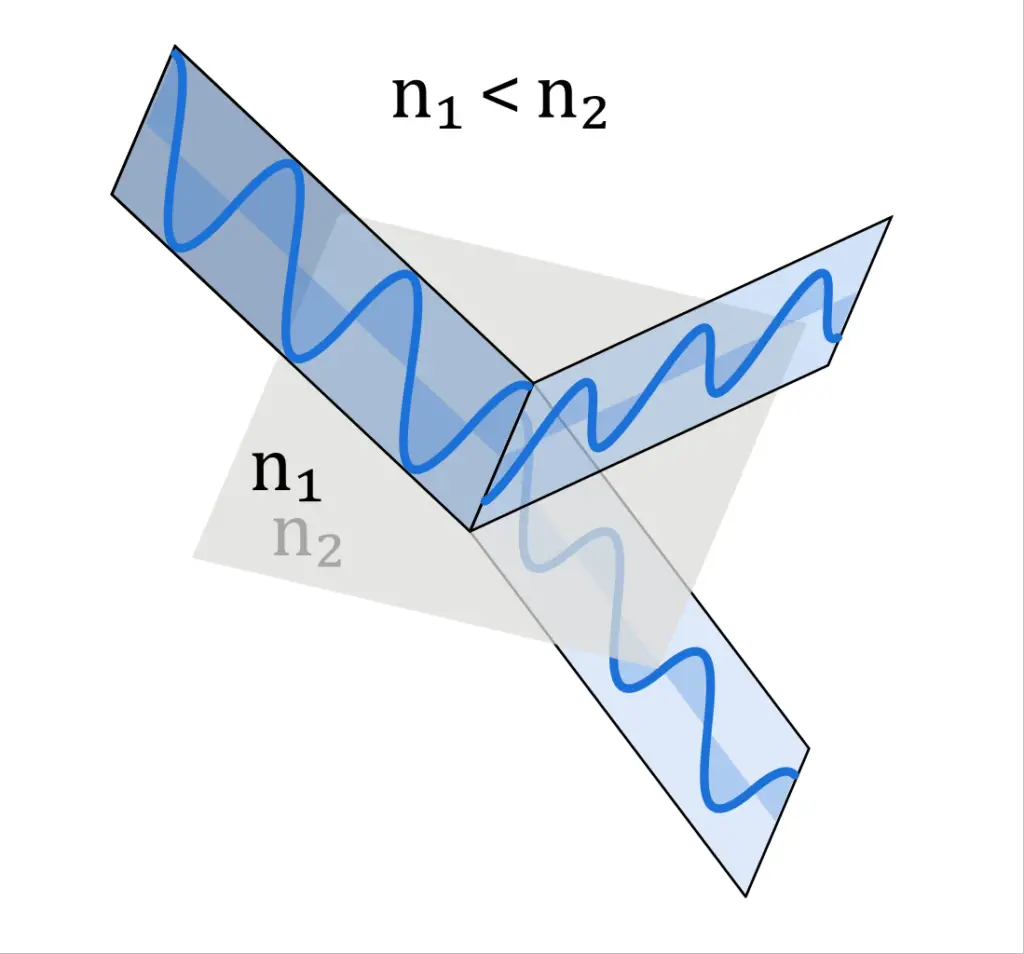
Reflection
Reflection occurs when radio waves encounter a surface that can’t absorb their energy, causing them to bounce back into the medium they came from. This phenomenon is akin to a rubber ball thrown against a wall; the angle at which it hits the wall is the same angle at which it bounces back. In radio communications, reflection is a double-edged sword. It can be beneficial, as in the case of signals reflecting off the ionosphere to cover vast distances, or problematic, leading to signal echo or multipath interference where the signal takes multiple paths to reach the receiver, potentially causing distortion or loss of signal integrity.
Refraction
Refraction is the bending of radio waves as they pass through different media with varying densities, such as the layers of the atmosphere. This bending is due to the change in speed of the wave in different media. The ionosphere plays a significant role here, especially in skywave propagation, by refracting high-frequency radio waves back to Earth. This layer of the Earth’s atmosphere is ionized by solar radiation, creating conditions ripe for the refraction of radio waves, thus enabling long-distance communication that would otherwise be impossible due to the curvature of the Earth.
Diffraction
Diffraction is the bending of radio waves around obstacles or the spreading of waves as they pass through narrow openings. It is diffraction that allows radio signals to be received even when the transmitter and receiver are not in direct line of sight, with signals bending around buildings, mountains, or other obstructions. This property is crucial in urban environments and rugged terrains, where direct paths between transmitter and receiver are often obstructed.
Absorption
Absorption occurs when the energy of radio waves is absorbed by the materials they encounter, converting it into heat. Different materials absorb radio waves to varying degrees; for example, water and trees can absorb radio waves significantly, reducing the strength of signals, especially at higher frequencies. Understanding the materials’ absorption properties in an environment is essential for effective antenna placement and minimizing signal loss.
The interplay of these phenomena underscores the complexity of radio wave propagation and its susceptibility to environmental factors. By understanding how radio waves interact with their surroundings, amateur radio operators can better strategize antenna placement, frequency selection, and other aspects of their setups to optimize communication efficacy.
Practical Application in Amateur Radio
The intricate dance of radio waves through the ether is not just a subject of academic curiosity; it has profound implications for the practice of amateur radio. Mastery over these waves can elevate an amateur radio operator from mere participation to excellence in this global hobby. Understanding the nature and behavior of radio waves enables enthusiasts to design antennas that capture these elusive waves more effectively, select frequency bands that match their communication needs, and employ propagation prediction tools to anticipate and leverage atmospheric conditions. Let’s delve into how this knowledge transforms into practical applications in the realm of amateur radio.
Antenna Design and Placement
The antenna, a radio operator’s gateway to the world, serves as the critical interface between the ethereal realm of radio waves and the tangible world of electrical equipment. The principles of wavelength, frequency, and polarization directly inform antenna design and placement. For instance, the choice between a dipole antenna for balanced horizontal polarization or a vertical ground plane antenna hinges on understanding how polarization affects signal propagation and reception. Furthermore, the physical length of an antenna is typically a fraction of the wavelength of the target frequency, underscoring the need to grasp the fundamental relationship. Antennas are not just placed; they are strategically positioned, with considerations for height above ground, orientation, and surrounding obstacles, all of which are predicated on a deep understanding of radio wave behavior.
Choosing the Right Frequency Band
The amateur radio spectrum is vast, stretching from the deep tones of 2200 meters all the way to the ultralight 2.4 GHz band and beyond. Each band has its unique propagation characteristics, influenced by solar activity, time of day, and atmospheric conditions. Knowledge of these properties allows operators to select the frequency band best suited for their intended communication distance and mode. For instance, the 20-meter band is renowned for its reliability for long-distance daytime communication, a fact rooted in its favorable interaction with the ionosphere. Conversely, the 2-meter band, operating in the VHF range, is more suited for local and regional communication, where space wave propagation comes into play. An informed choice of frequency band can mean the difference between a successful QSO (contact) and radio silence.
Propagation Prediction Tools
The internet age has bestowed upon amateur radio operators a wealth of tools and resources to predict radio wave propagation. These tools, which include sophisticated software models and real-time observation data, allow enthusiasts to make informed predictions about the best times and frequencies for communication. By inputting parameters such as location, target frequency, and solar-terrestrial data, operators can anticipate propagation conditions, plan their radio activities, and even participate in contests or DXpeditions with greater success. This melding of traditional radio knowledge with modern computational power is a testament to the ever-evolving nature of amateur radio, driven by an enduring fascination with the physics of radio waves.
Conclusion
Delving into the intricate world of radio waves reveals not just the foundational principles underlying amateur radio but also the profound connection between theoretical physics and practical application. This exploration underscores the importance of understanding radio waves’ nature and properties for anyone passionate about amateur radio. By mastering these concepts, enthusiasts can optimize their setups, engage in more effective communication, and even pioneer innovations in radio technology.
The journey through the electromagnetic spectrum, from the generation of radio waves by alternating current in antennas to their interaction with the environment, opens up a realm of possibilities for experimentation and discovery. It’s through hands-on experience—tweaking antenna designs, experimenting with different frequency bands, and employing propagation prediction tools—that the theoretical becomes tangible.
This exploration is just the beginning. The vast expanse of amateur radio awaits, ripe with opportunities for learning, experimentation, and growth. Subscribe or follow to dive deeper into the world of amateur radio fundamentals, where theory meets practice, and curiosity fuels innovation. Share your experiences or experiments with radio wave properties in the comments or on social media, and become part of a community dedicated to unraveling the mysteries of the airwaves. Together, let’s push the boundaries of what’s possible in amateur radio.
Further Links
- https://www.vedantu.com/physics/radio-waves
- https://www.britannica.com/science/radio-wave
- https://www.toppr.com/guides/physics/electromagnetic-waves/radio-waves/
- https://en.wikipedia.org/wiki/Radio_wave
- https://byjus.com/physics/electromagnetic-spectrum-radio-waves/
- https://scienceaid.net/physics/waves/radio.html

